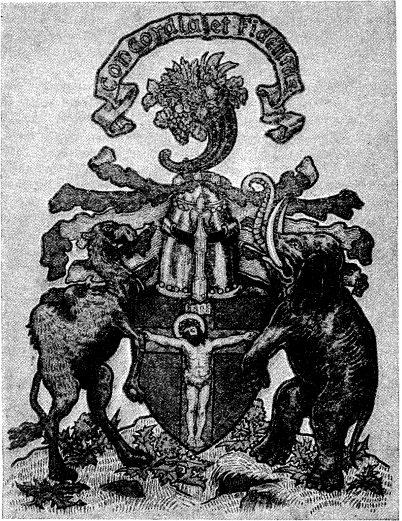
 |
| FIG. 251.--Armorial bearings of the Royal Burgh of Inverness: Gules, our Lord upon the Cross proper. Mantling gules, doubled or. Crest: upon a wreath of the proper liveries a cornucopia proper. Supporters: dexter, a dromedary; sinister, an elephant, both proper. (From a painting by Mr. Graham Johnston in Lyon Register. |
*1 Arms of Rutherglen: Argent, in a sea proper an ancient galley sable, flagged gules, therein two men proper, one rowing, the other furling the sail. Above the shield is placed a suitable helmet, with a mantling gules, doubled argent; and on a wreath of the proper liveries is set for crest, a demi-figure of the Virgin Mary with the Infant Saviour in her arms proper; and ona compartment below the shield, on which is an escroll containing this motto, "Ex fumo fama," are placed for supporters, two angels proper, winged or.
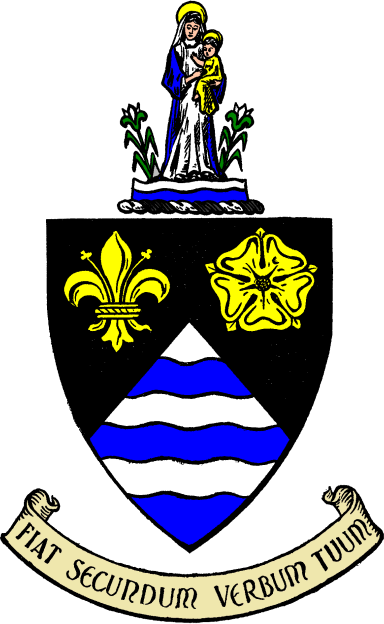 |
| FIG. 252.--Arms of Marylebone: Per chevron sable and barry wavy of six, argent and azure in chief, in the dexter a fleur-de-lis, and in the sinister a rose, both or. Crest: on a wreath of the colours, upon two bars wavy argent and azure, between as many lilies of the first, stalked and leaved vert, a female figure affronté proper, vested of the first, mantled of the second, on the left arm a child also proper, vested or, around the head of each a halo of the last. Motto: "Fiat secundum verbum tuum." |

 specifies eight different varieties, namely: 1. The wild man's; 2. The Moor's; 3. The Saracen's; 4. The Saxon's; 5. The Englishman's; 6. The old man's; 7. The woman's; 8. The child's.
specifies eight different varieties, namely: 1. The wild man's; 2. The Moor's; 3. The Saracen's; 4. The Saxon's; 5. The Englishman's; 6. The old man's; 7. The woman's; 8. The child's.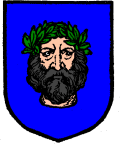 |
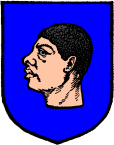 |
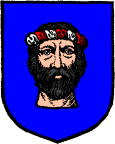 |
| FIG. 253.--A savage's head. | FIG. 254.--A blacka-moor's head. | FIG. 255.--A Saracen's head. |
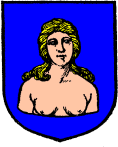 |
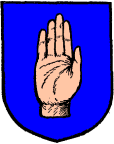 |
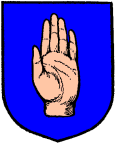 |
| FIG. 256.--A woman's head and bust. | FIG. 257.--A dexter hand. | FIG. 258.--A sinister hand. |
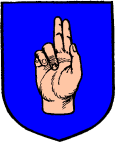 |
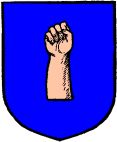 |
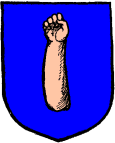 |
| FIG. 259.--A hand "in benediction." | FIG. 260.--A cubit arm. | FIG. 261.--An arm couped at the elbow. |
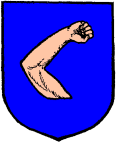 |
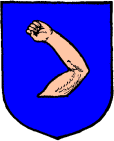 |
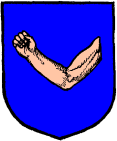 |
| FIG. 262.--An arm embowed. | FIG. 263.--An arm embowed to the dexter. | FIG. 264.--An arm embowed fesseways. |
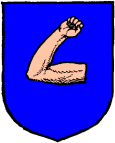 |
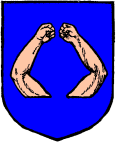 |
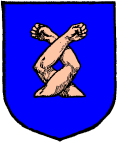 |
| FIG. 265.--An arm embowed the upper part in fesse. | FIG. 266.--Two arms counter-embowed. | FIG. 267.--Two arms counter-embowed and interlaced. |
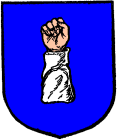 |
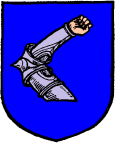 |
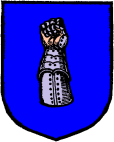 |
| FIG. 268.--A cubit arm habited. | FIG. 269.--An arm embowed in armour. | FIG. 270.--A cubit arm in armour, the hand in a gauntlet. |